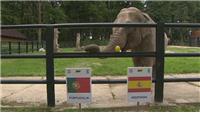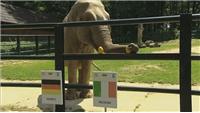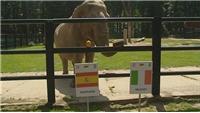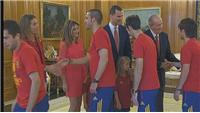
Warsaw

Province: Mazovia
Population: 1,711,000
Area: 517km²
Motto: Contemnit Procellas (It Defies the Storms)
Warsaw is the capital and largest city of Poland.
"Warszawianka" is widely considered the unofficial anthem of Warsaw. On 9 November 1940 the City of Warsaw was awarded the Silver Cross of Poland's supreme military decoration for courage in the face of the enemy, the Order Virtuti Militari for the heroic defence in 1939.
Warsaw is also known as the "phoenix city", as it recovered from extensive damage during World War II (during which 80% of its buildings were destroyed), being rebuilt with the effort of Polish citizens. Warsaw has given its name to the Warsaw Confederation, Warsaw Pact, the Duchy of Warsaw, Warsaw Convention, Treaty of Warsaw, Warsaw Uprising and the Warsaw Ghetto Uprising.
THINGS TO SEE
In 1980 the Old Town was put on UNESCO's World Heritage list and with good reason – this square kilometre is home to many of Warsaw's historical monuments. The Royal Castle dominates. Blown up in World War Two, it has been painstakingly rebuilt and once home to dukes, tsars and – between 1918 and 1939 – the Polish president, its doors now open to a steady stream of tourists.
Like the Royal Castle, much of the Old Town has been restored over the past 60 years and it is telling that of the stylish houses lining the stunning Rynek Starego Miasta (Old Town Square), only two are originals – Nos 34 and 36. On the northern side of the square is the National Museum of Warsaw, one of around 60 museums in the city with other highlights in honour of the Chopin, Hunting and Riding, Motorisation, Caricatures and Posters.
Fan zone: Plac Defilad (Parade Square)
Warsaw's enormous 120,000m² fan zone, located next to the train station, will accommodate up to 100,000 people and feature six giant screens. It opens on the eve of the tournament and thereafter it will welcome fans from 10.00 to 01.00 until 2 July. It is free to enter and will broadcast all 31 matches live, though at other times there will be plenty of entertainment such as football skill tests, five-a-side pitches, live concerts and DJ sets, as well as offer a full range of food and beverages.
TRANSPORT
To and from
Warsaw-Fryderyk Chopin Airport is 8km south of the city centre. There are several train stations, but most travellers need only concern themselves with Warszawa Centralna in the heart of the city – but please note it is not always the final destination. There are direct daily services to Wroclaw (five hours), Gdańsk (4.5 hours), Poznan (3-4 hours), Lviv (14 hours, though quicker if you change) and Kyiv (15 hours). There are two bus terminals: Warszawa Stadion serves east-bound destinations while Warszawa Zachodnia handles all other routes, including to Gdańsk and Wroclaw (both take 5-7 hours).
Distances to other UEFA EURO 2012 venues
Poznan – 320km Wroclaw – 350km Gdańsk – 345km
Lviv – 385km Kyiv – 820km Kharkiv – 1,250km Donetsk – 1,465km
In and around
Warsaw's integrated public transport system includes buses, trams and the metro. The main routes run from 5.00 to 23.00 every day, thereafter night buses link Emilii Plater Street in the centre to major suburbs though on Friday and Saturday the metro runs until 2.00. It is best to buy tickets before boarding – look out for signs saying 'Sprzedaż Biletów ZTM'. Single journeys cost 2.40zł and there are also tickets for 90 minutes/one day/three days/week (6/9.60/14.40/32zł).
National Stadium Warsaw

Built on the site of the Tenth Anniversary Stadium, Warsaw's was the last venue to be completed.
UEFA Capacity: 50,000
Tenants: Polish national team
Located on the eastern banks of the Vistula in the district of Praga Poludnie, its red-and-white facade resembles a waving Polish flag and it was designed by JSK Architekci, the company behind the Municipal Stadium Wroclaw.
The National Stadium is on the site of the old Tenth Anniversary Stadium which since 1989 had been home to a bazaar.
The old venue, partly constructed using rubble collected from the site of the Warsaw Uprising, had stood since 1955. Primarily a football stadium, it also hosted athletics, cycling and, in 1983, Pope John Paul II gave mass to a congregation of 100,000.
The last international took place in April 1983 when an own goal from future Poland national team coach Paweł Janas restricted the hosts to a 1-1 UEFA European Championship qualifying draw with Finland.
The roof, a 240x270m structure, features a crisscross of steel that clamps onto a giant spire hanging 30m over the centre spot.
Hot News
- Funny Balotelli!
- Spanish fans celebrate Euro Cup win
- That's German WAGS!
- The sexy female fans in Euro 2012
- Euro 2012: Spain fans celebrate victory
- Spain vs Italy in clash of the Euro WAGs
- Euro 2012 Final - Spain 4 : 0 Italy, Part 2
- Germany knocked out by Italy
- Natalia Siwiec blasts Sol and the BBC
- Coleen Rooney reveals her bikini body secrets
- Italy's fans celebrated wildly
- Euro 2012 Final - Spain 4 : 0 Italy, Part 1
| Rank | Team | W/D/L | Pts |
|---|
Cities & Stadiums
The Top 3 Teams of Previous Tournaments
| Year | Winners | Runner-up | Third place |
|---|---|---|---|
| 2008 | Spain | Germany | Russia / Turkey |
| 2004 | Greece | Portugal | Netherlands / Czech Republic |
| 2000 | France | Italy | Netherlands / Portugal |
| 1996 | Germany | Czech Republic | France / England |
| 1992 | Denmark | Germany | Netherlands / Sweden |
| 1988 | Netherlands | Soviet Union | Italy / West Germany |
| 1984 | France | Spain | Denmark / Portugal |
| 1980 | West Germany | Belgium | Czechoslovakia |
| 1976 | Czechoslovakia | West Germany | Netherlands |
| 1972 | West Germany | Soviet Union | Belgium |
| 1968 | Italy | Yugoslavia | England |
| 1964 | Spain | Soviet Union | Hungary |
| 1960 | Soviet Union | Yugoslavia | Czechoslovakia |



